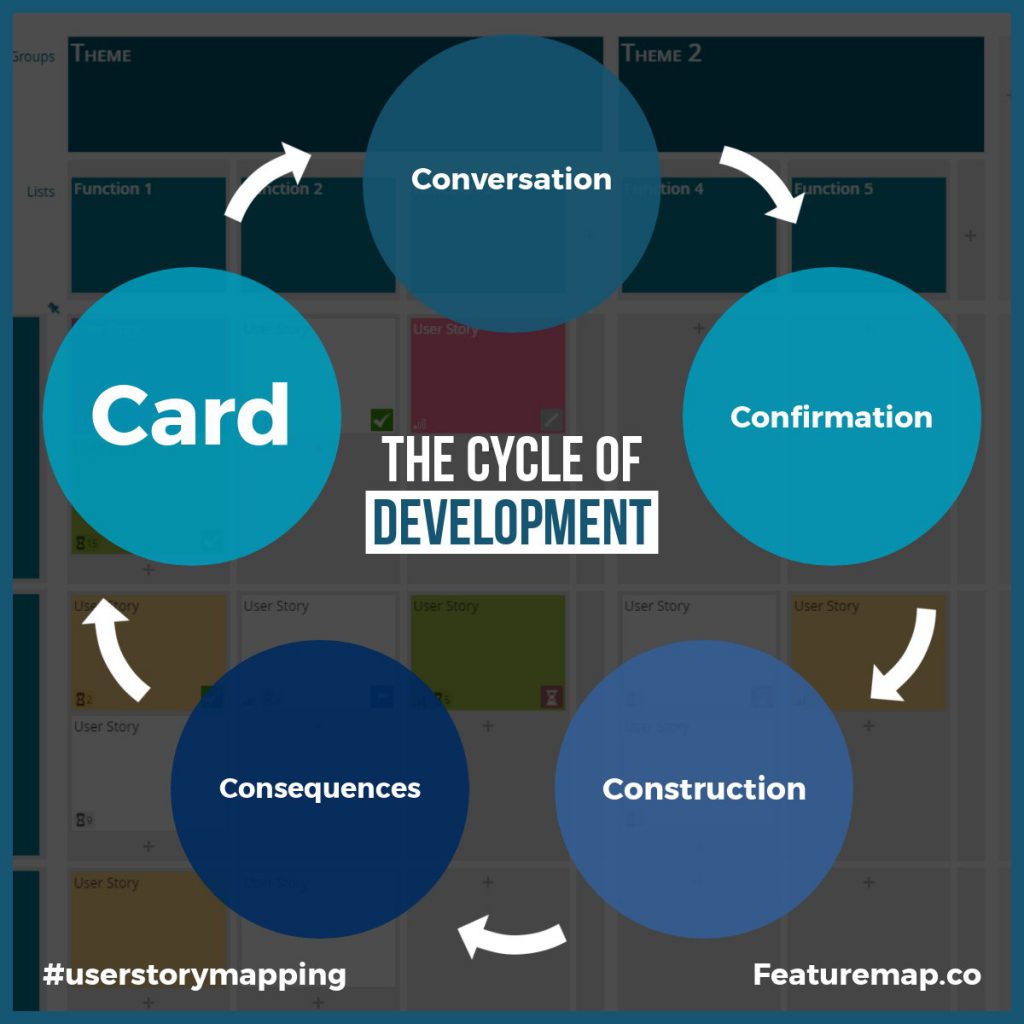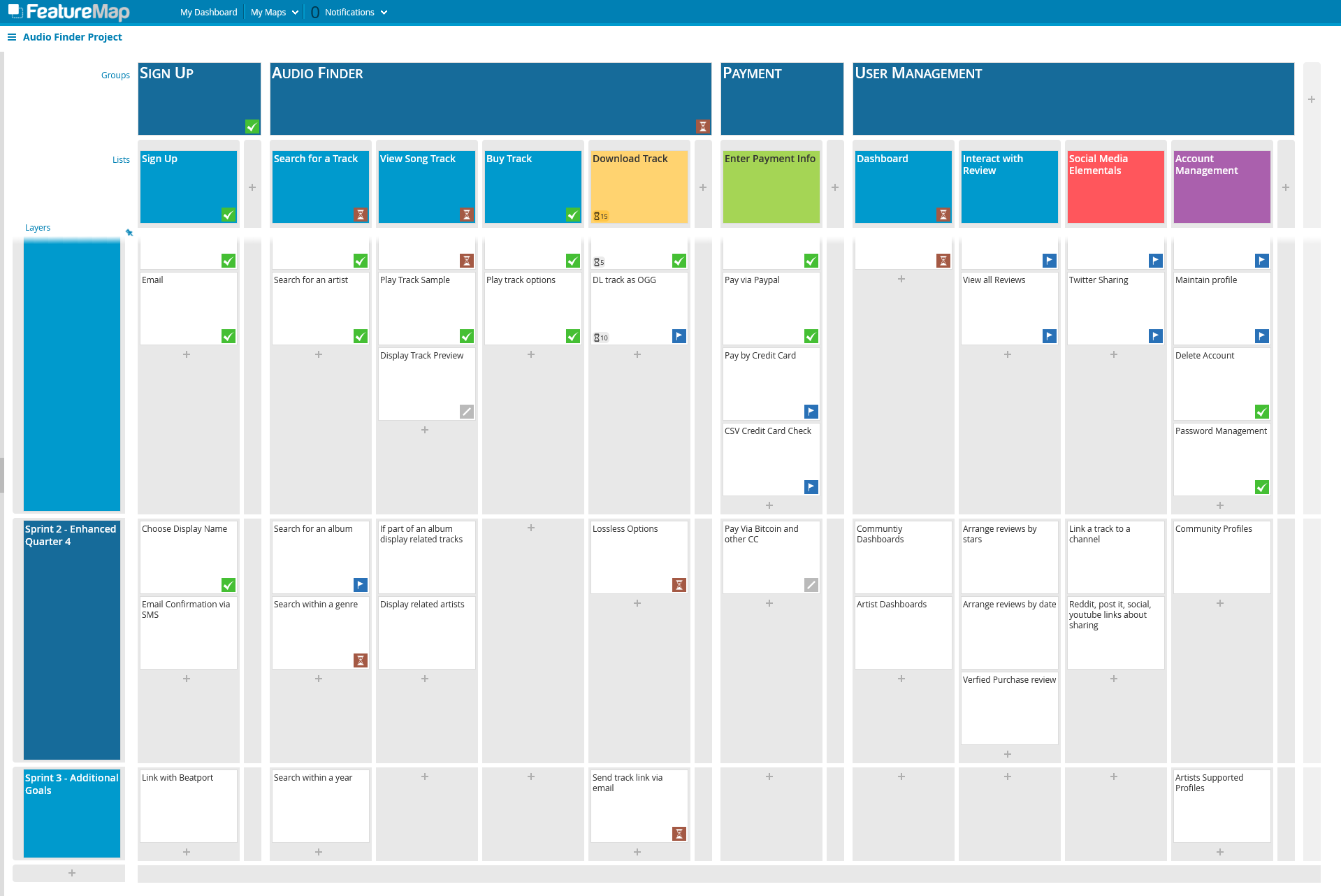In 2020 we saw the rise of Remote workers. In 2021 we saw businesses, that were ahead, embrace working from home and remote workers. With the shift, came the realisation that conversation is king when it comes to project management. Communication, communication, communication.
User Story Mapping is the tool for a team to build out, or embrace a project. It enables you and your wider team to come together and design your product in full.
In essence, a simple story idea is; write something on a card, talk about it, converse and agree on what to build. -> Complete the build and move to the next.
It sounds simple, but in a working environment, it is normally vastly more complex. Stories end up going through multiple processes, cycles and conversations. Stories end being created with 3 main needs. A card for the business, a card for the user and a card for the developers. Luckily User Story Mapping is something that can absolutely lend itself to this process.
The Right Size for the Right Story
A tried and tested method to help develop your Map is utilising the “right size” method. Break down each part of the project/prodocut until it fits the “right size”.
For example, when writing a User Story Map with a team, you loosely fall into three categories:
- The User.
- The Business.
- The Developer.
The user’s “right size” is a story or card that fulfills a need.
The businesses “right size” is a story which bundles features, outlines updates, themes or new products. First it is set-up as a Minimum Viable Product and following releases are the right size which helps a business achieve a business outcome.
The developer’s right size is the most efficient for designing, building and testing.
Really you can define these to your preferences, but if you are unsure, use the above outlines.
Big Stories Break Down to Smaller Stories
Big stories (or epics) can be broken down to smaller stories, and then again even smaller. Each sprint/epic/story/card can be defined for each group but no matter the size, they are still a story.
To break down larger stories, use conversation.

Discuss and Discover
When you discuss with your team, break down each story until it fits the “right size”.
Each size will vary from business to business, and project to project, so don’t define too much. Use conversations to allow you to naturally identify the “right size”.
When you discuss, dig deep into:
- Who the user will use your solution.
- How the user meet their needs without your solution.
- How it would change with your solution.
- How your solution would look and function.
- How long will your solution take to build.
Even after your discussed discovery session, don’t stop talking, don’t stop collaborating.
With each step, each conversation will have different teams and different conversations, in particular, the main three, so do note each evaluation will vary.
Yet with each conversation, each meeting, each get-together, this can lead to slow down, so be aware of how you plan your meetings.
With FeatureMap you are able to construct your maps and have constant, flowing conversation on each card, story or epic. Have your entire team chime in, discuss and do so remotely. Allow this process to be part of the working stage eliminating unnecessary meetings for all and saving time and money.
With each card, story and sprint you design and build, every single card will have consequences, re-explore these, discuss them, confirm them.
Conversation is King with User Story Mapping so get started, and save time and hours, Plug in your exisiting work, or start anew.

